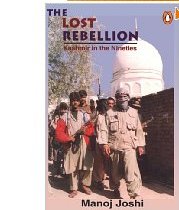In all
the breast beating about the Kandahar hijacking raised by former R&AW chief
AS Dulat’s book on Kashmir, people are forgetful of an important point: The
terrible events of September 11, 2001 have forever ensured that there is only
one way to deal with a hijack free the hostages through negotiations or
commando action, or shoot it out of the sky. There is no middle ground left.

This
said, we can look at that event with some hindsight. It is clear now, as it was
then, that the handling of the event was a blunder, not a simple “goof up” as
Dulat suggests. In keeping with the Indian tradition of no one being held
accountable for anything, no heads rolled and no one was punished for that
event. People blamed the Crisis Management Committee headed by Cabinet
Secretary Prabhat Kumar, they in turn blamed the all-powerful Brajesh Mishra,
the National Security Adviser, who in turn said that the NSG and Punjab Police
personnel failed to do the needful. Incidentally, Prime Minister Vajpayee
learnt of the hijacking 100 minutes after it occurred because he was not
informed by the Indian Air Force pilots on his Boeing 737 since he was on an
internal flight.
And, as
usual no lessons were learnt. When terrorists struck in Mumbai on November 26,
2008, there was a repeat performance. The state’s Crisis Management Group
headed by its Chief Secretary was a non-starter, the police chief barricaded
himself near the Trident hotel instead of being in the control room, and the
National Security Guards took their time arriving, ensuring that an event that
could have been terminated within hours was allowed to play out for 60 hours.
One of the major flaws in the idea of Crisis Management Groups at the time, was
the belief that crises can be managed by committees, that too of babus who are
better trained to avoid decisions.
Fortunately,
a new hijack doctrine laid out by the United Progressive Alliance government in
2005, left out the Crisis Management Committee. The new policy framework was
approved by the Cabinet Committee on Security which said that a commercial jet
could be shot down if there were fears that it would be used as a missile by
hijackers. Further, it ruled out negotiations on the demands of the hijackers.
Negotiations, involving trained negotiators would take place only to seek the
termination of the event and seek the safe release of the passengers. In
addition, the government declared that it would seek the death penalty against
anyone seeking to hijack an aircraft.
While the
decision to shoot down an aircraft would rest with the CCS or, the PM, defence
minister and the home minister, a provision was made for a quick decision by a
senior Air Force officer in the event of an aircraft going rogue during landing
or take off giving little time for the normal chain of command to be accessed.
A hijacked aircraft would be accompanied by IAF fighters in Indian airspace and
specific orders given to ensure that no hijacked aircraft which landed in an
Indian airfield could take off again. Such aircraft would be liable to be
stormed by the NSG, were there to be a situation that threatened the lives of
the passengers.
Despite
all this, it is not clear whether we would be able to handle the next event
efficaciously. The only way such situations can be handled is by clear-cut
doctrines, chains of command and repeated practice. It is true that no one
event is like another. Yet, if the doctrine is well articulated and understood,
the chain of command clear and uncomplicated, and those charged with dealing
with the incidents put through regular exercises, there is no reason why they
cannot handle any version of the challenge.
But that
is where the rub lies. Most people have forgotten that we actually have an
anti-hijack doctrine. They cannot be blamed because this is something that the
government needs to educate the public on and this can be done through periodic
exercises. This holds good not just for hijack threats, but terrorist actions
as well. We may have overcome the challenges of Sikh and Islamist terrorism
that afflicted us in the 1990s and mid-2000s, but only the foolhardy will say
that the era of terrorism is over. It is not, and we must put all the lessons
Mid Day July 7, 2015



